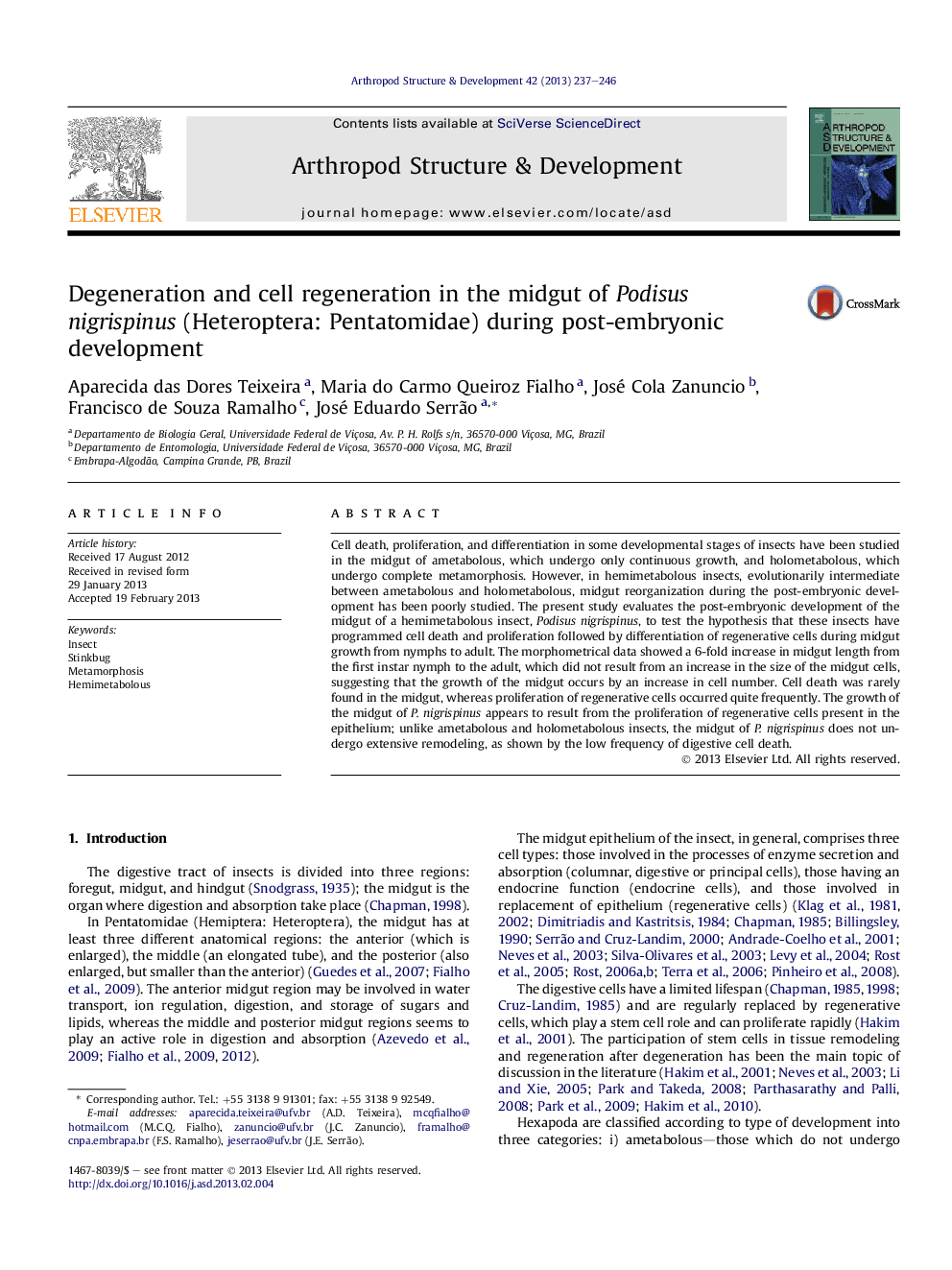| Article ID | Journal | Published Year | Pages | File Type |
|---|---|---|---|---|
| 2778749 | Arthropod Structure & Development | 2013 | 10 Pages |
Cell death, proliferation, and differentiation in some developmental stages of insects have been studied in the midgut of ametabolous, which undergo only continuous growth, and holometabolous, which undergo complete metamorphosis. However, in hemimetabolous insects, evolutionarily intermediate between ametabolous and holometabolous, midgut reorganization during the post-embryonic development has been poorly studied. The present study evaluates the post-embryonic development of the midgut of a hemimetabolous insect, Podisus nigrispinus, to test the hypothesis that these insects have programmed cell death and proliferation followed by differentiation of regenerative cells during midgut growth from nymphs to adult. The morphometrical data showed a 6-fold increase in midgut length from the first instar nymph to the adult, which did not result from an increase in the size of the midgut cells, suggesting that the growth of the midgut occurs by an increase in cell number. Cell death was rarely found in the midgut, whereas proliferation of regenerative cells occurred quite frequently. The growth of the midgut of P. nigrispinus appears to result from the proliferation of regenerative cells present in the epithelium; unlike ametabolous and holometabolous insects, the midgut of P. nigrispinus does not undergo extensive remodeling, as shown by the low frequency of digestive cell death.
► The modifications in the nymphal midgut of a hemimetabolous insect are described. ► Midgut increase during post-embryonic development occurs by cell proliferation. ► Low rate of digestive cells death occurs along the nymphal development. ► Midgut development differs in ametabolous, hemimetabolous and holometabous insects.
